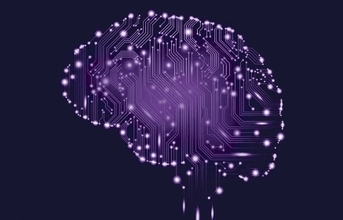
AI goes way beyond robotics. There are several areas where AI can greatly help manufacturing. The strength of AI is a rich set of specialized algorithms that can find unique patterns in data which are extremely difficult for humans to see even with best charting tools. One of the key AI techniques that has shown big benefits in this area is called Machine Learning (ML). ML can look at large volumes of data and extract actionable insights. The data may be in form of sensor readings (timeseries), text entries, audio samples, images or video streams - ML can be used to extract valuable knowledge from it.
Using ML plant managers can use demand forecasting to plan production efficiently based on the anticipated orders. Technologies like neural networks and fuzzy logic work on several data sources like operation history, usage patterns and weather data to predict the demand and even allow what-if scenarios to be done to evaluate multiple options. Similarly, ML can help factories with inventory management to plan their supply and delivery cycles. Many global logistics firms are actively using AI for route planning as well as some interesting experiments like drone-based supply deliveries. ML can help factories move from routine and preventive maintenance towards a solid predictive maintenance strategy. Using sensor data from critical equipment, a prediction of asset health and remaining
useful life can be made. We can use this information to plan our scheduled maintenance cycles so we can make maximum utilization of these assets. Another area where AI can greatly help the factory floor is visual inspection. As industrial cameras are getting cheaper
we could use these live video feeds to detect incidents like fire in the plant. We could use cameras and AI algorithms to inspect parts and improve quality. Also using special types of sensors like acoustic and vibration probes we can monitor the vibration of equipment. We can use AI algorithms to identify signatures of failure much before the equipment actually fails - giving us enough time to inspect and fix.
After machine learning the next maturity level for your AI strategy is commissioning digital twins for the factory assets. Digital twins are data-driven models specific to individual assets which keep learning from new data and update themselves. They can provide the latest and up-to-date status of your asset. As shown in figure
2, a digital twin-based hierarchy of the plant can help plant managers quickly identify and resolve issues. Here the health is a metric for the twin that is calculated by AI based on latest data. Another area where AI can strongly contribute to is human-machine interaction. Just as more consumer products are leveraging chatbots, voice-assistants and virtual/augmented reality interfaces - we will also see the rise of these in manufacturing. Imagine a field repair Engineer interacting with a digital twin using a text or voice interface and asking questions about an asset and getting real-time response including how to fix an issue. This all may seem something out of a science fiction book - but it is definitely closer to reality than you think.
Many people appreciate the value of AI but don't really know how to get started. My advice will be to start small and define a limited proof-of-concept with significant outcomes. Ideally this should be in an area where you already have significant historical data and engage a data science team (internal or external) to start analyzing this. A key to defining an AI project is setting the expectations right. There are specific areas in which AI is good at and you should clearly define the expected outcome of your AI project and how you will measure it. Hopefully a quick-hit AI solution like visual inspection, asset digital twin or logistics optimization will help you understand and drive a solid AI strategy across your factory floor. All the best!
END


























